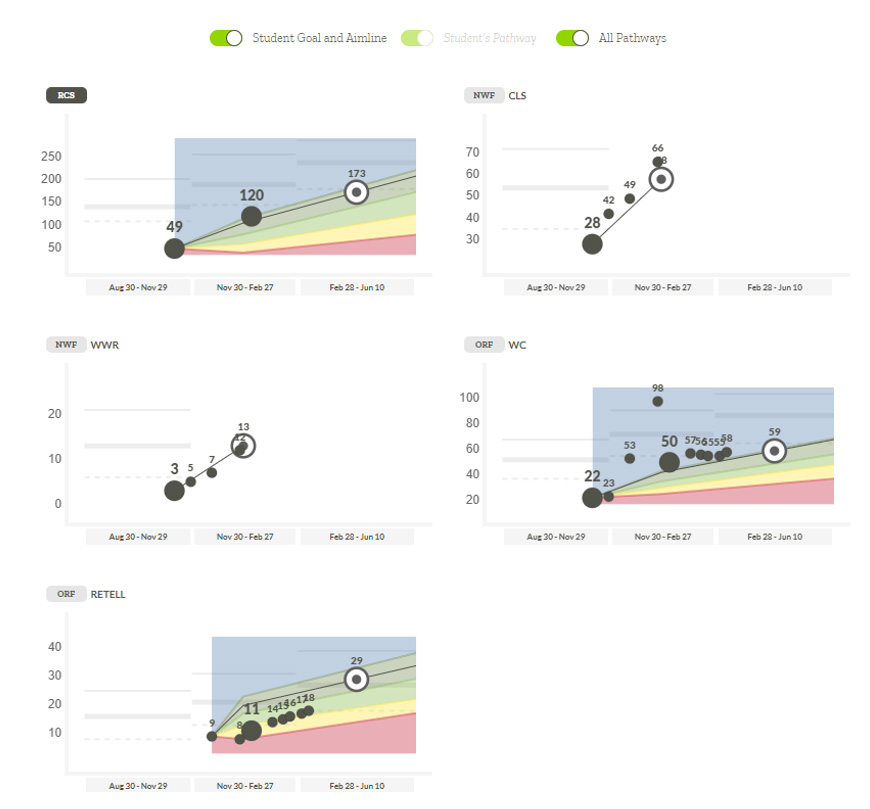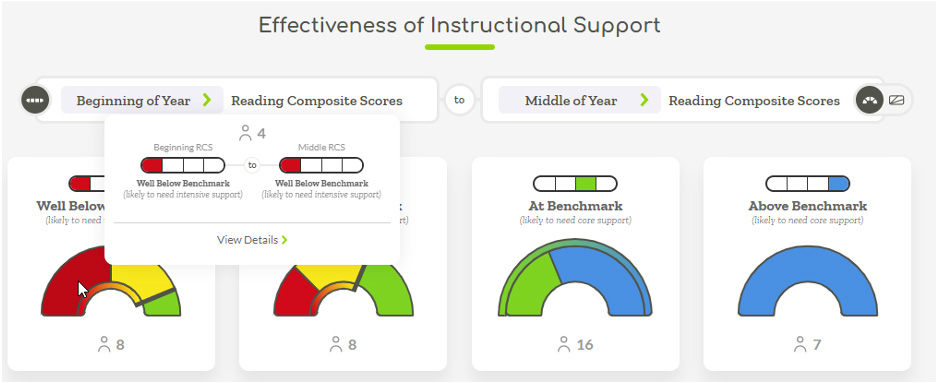Using Acadience Learning Online to Support the Science of Reading
We frequently hear about science of reading (SoR) in leadership discussions, and it is referenced all across social media in education groups. So, what exactly is the science of reading and why, suddenly, is it so important? More importantly, HOW do teachers know for certain they are teaching the concepts and skills that are important to the science of reading?
The science of reading is a comprehensive body of research which includes years of research conducted in neuroscience, cognitive development psychology, and linguistics. This research provides scientific evidence about how students learn to read, what goes wrong if they struggle, and what can be done to help all students improve reading performance.
Scientific reports during the past 50 years show consistent findings of the importance of learning to read at early primary grade levels. This research also explains that 95% of all students are able to read—the exception is for about 5% of students who have significant cognitive disabilities.
Yet, according to the 2017 National Assessment of Educational Progress (NAEP) 31% of all fourth-grade students scored “below basic” in reading, and 33% have achieved “basic” competence. That’s 64% of our students who are reading less than proficiently.
This is a national crisis.
In response to this crisis, state DOEs and school districts across the country have formulated a plan to ensure teachers learn HOW to teach reading based on years of scientific reading research.
Teachers across the country are currently immersing themselves in learning the science of reading through school, district, and state professional development initiatives. As a result, teachers now recognize the source of a student’s struggle in literacy development through observation. As teacher’s understand more about SoR and how “The Reading Brain” functions, they understand the importance of teaching the Five Essentials of Literacy: Phonological/Phonemic Awareness, Phonics, Fluency, Vocabulary Development, and Comprehension, and can effectively substantiate their teacher observations through data analysis.
Acadience® Reading (previously published as DIBELS Next®) provides quick, reliable, and valid measures for all students, including those with dyslexia, to indicate if they are on track for reading success. It also pinpoints where students are struggling in the acquisition of foundational literacy skills to provide literacy support to prevent later reading difficulties.
Acadience Reading is now available within Acadience® Learning Online (ALO), which allows either paper/pencil or online administration with a dynamic reporting feature. This dynamic reporting provides the data administrators need but places the class and student’s individual performance at the teacher’s fingertips. The visual demonstration of data is simple to read and understand in real time. It is also readily accessible to make important instructional decisions as soon as possible.
My favorite report is the Pathways of Progress. As soon as you click on a student’s name, a teacher can see the student’s performance toward expected goals in all areas of reading. Here is an example of a second-grade student’s Pathway to Progress. It shows what she scored on her Beginning-of-Year (BOY) and Middle-of-Year (MOY) benchmark assessments and her progress-monitoring results. The white circle with the black dot in the middle represents her goal, which is determined by the wealth of normed data in the system. Teachers can adjust the student’s goal as well. The specific data provided for each student supports timely instructional decisions.
| Legend: | |
| RCS: Reading Composite Score | NWF CLS: Nonsense Word Fluency, Correct Letter Sounds |
| NWF WWR: Whole Words Read | ORF WC: Oral Reading Fluency, Words Correct |
| ORF Retell: A comprehension measure |

Another report from ALO is the Effectiveness of Instructional Support. Teachers can learn how students are progressing from one benchmark assessment to another. If a teacher has students who are Well Below Benchmark or Below Benchmark and are still at the same level during the next benchmark period, this certainly is a sign that a student may not be responding to instruction and appropriate intervention is needed. Simple clicks provide a list of the students in each color-coded category.

These are only two examples of the dynamic reporting ALO has to offer. You can easily see how teachers can effectively support student success with this system.
Teachers are no longer feeling discouraged and frustrated when students are not reading at the same proficiency as their peers. Teachers should be empowered with the knowledge, confidence, and skills to become reading scientists, by having access to user-friendly, meaningful, and credible data to support their observations.
As a result, more students will succeed in school and in life.


